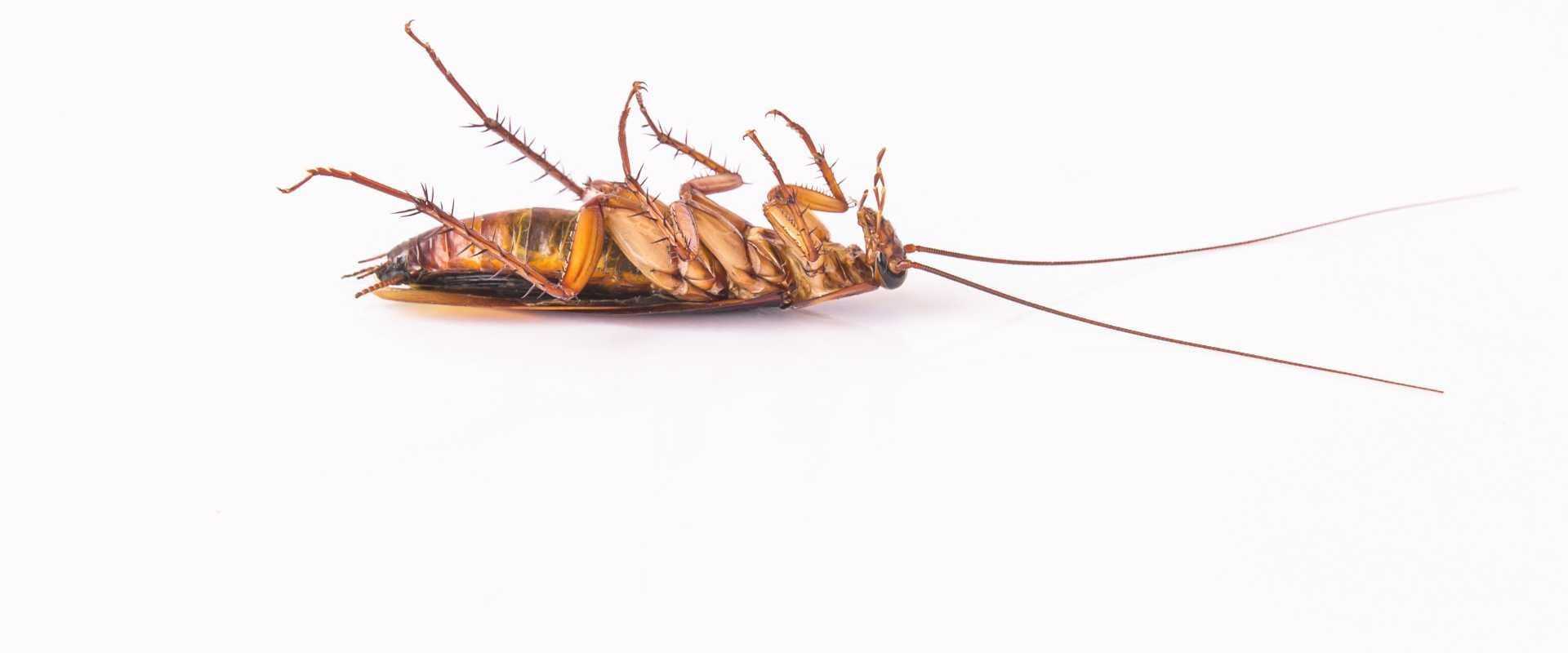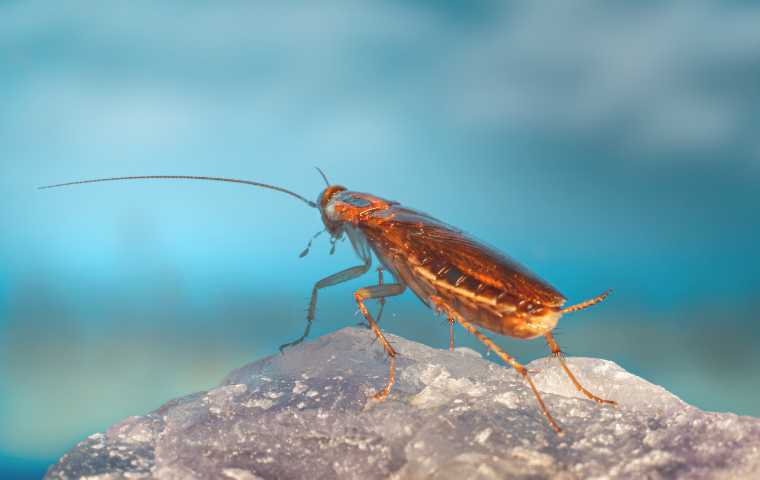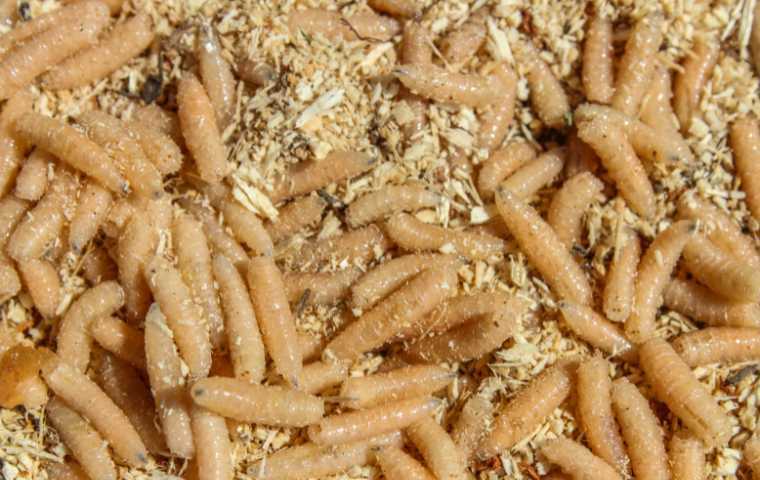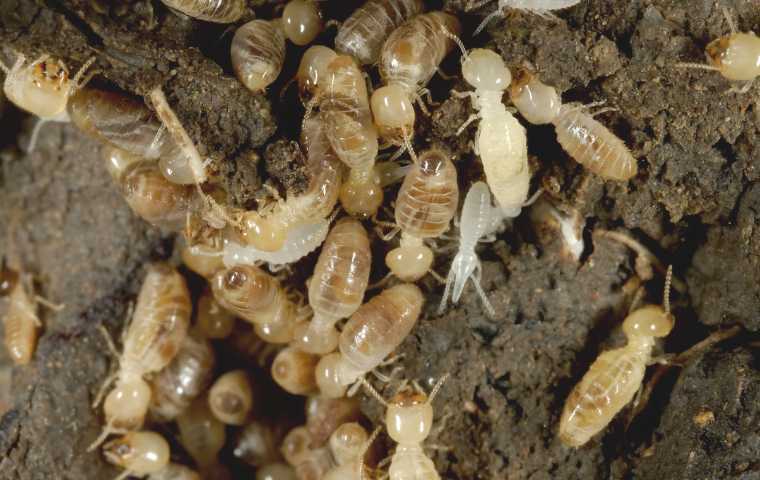
What Are Cockroaches?

Cockroaches are a group of insects belonging to the order Blattodea. They are characterized by their flattened bodies, long antennae, and two pairs of wings. Cockroaches are among the most primitive and hardy insects, with a history dating back over 300 million years. They are known for their adaptability and resilience, which has enabled them to survive in a wide range of environments.
Cockroaches are often considered pests due to their tendency to infest human habitats. They are nocturnal creatures that primarily scavenge for food, and they can consume a wide variety of organic matter, making them highly adaptable to different environments. They are also known for their rapid reproductive capabilities, with some species capable of producing thousands of offspring in a single year.
There are thousands of species of cockroaches, but a few common ones that often infest homes and buildings include the American cockroach, German cockroach, and Oriental cockroach. These pests can pose health risks as they are known to carry and transmit diseases, allergens, and trigger asthma in some individuals.
Controlling and preventing cockroach infestations typically involves maintaining a clean environment, sealing entry points, and using insecticides or traps. Professional pest control services may be necessary for severe infestations, as these insects can be challenging to eliminate.
What Types Of Cockroaches Are There?
American Cockroaches: Large and reddish-brown, American cockroaches are common in the United States. They prefer warm, damp environments and are often found in basements and sewer systems.
Australian Cockroaches: These are medium-sized, brown cockroaches found in Australia. Australian cockroaches primarily feed on plant matter and can be both indoor and outdoor pests.
Brown Banded Cockroaches: These small cockroaches have light brown bodies with distinctive brown bands across their wings. Brown banded cockroaches prefer dry, warm environments and can be found throughout the home.
German Cockroaches: Small and light brown with two dark stripes, German cockroaches are notorious indoor pests worldwide. They prefer warm, humid locations and are commonly found in kitchens and bathrooms.
Oriental Cockroaches: Also known as "water bugs," Oriental cockroaches are dark brown to black cockroaches that thrive in cool, damp areas. They are often associated with sewage and decaying organic matter.
Smoky Brown Cockroaches: These are large, reddish-brown cockroaches often found in the southern United States. They prefer outdoor habitats like tree hollows but may enter homes in search of moisture.
Wood Roaches: Wood roaches are outdoor insects that primarily feed on decaying wood. They are less likely to infest indoor spaces and are considered beneficial for breaking down dead wood in natural environments.
Cockroach Identification
Cockroaches exhibit a range of physical characteristics, though there are some common features that can help you identify them. Here's what cockroaches typically look like:
- Size and Shape: Cockroaches vary in size, but they are generally flat and elongated insects. The size can range from as small as half an inch to over two inches in length, depending on the species.
- Color: Cockroaches are often brown or black, although their coloration can vary between species and life stages. Some may be reddish or have a mottled appearance.
- Head: They have a small head that is covered by a hard, protective plate called the pronotum. Their head features two prominent antennae, which are used for sensory purposes.
- Eyes: Cockroaches typically have large compound eyes, which are well-suited for detecting movement and changes in light.
- Mouthparts: They have chewing mouthparts for consuming various types of organic matter.
- Wings: Most cockroach species have two pairs of wings. The forewings, or tegmina, are usually tough and protect the hind wings, which are used for flying. However, not all species are strong fliers, and some may have reduced or non-functional wings.
- Abdomen: The abdomen of a cockroach is composed of overlapping segments and may have a characteristic pattern of dark lines or spots. In some species, it's covered with small, fine hairs.
- Legs: Cockroaches have six legs, which are adapted for running quickly. Their legs are typically spiny and well-suited for gripping surfaces.
- Antennae: The antennae of cockroaches are long and thin, and they play a crucial role in sensing their environment, including locating food and detecting threats.
- Ovipositor: Female cockroaches have an ovipositor at the tip of their abdomen, which they use to deposit eggs in sheltered locations.
These characteristics can vary among different species of cockroaches. It's important to note that immature cockroaches (nymphs) look similar to adults but are smaller and lack wings. Additionally, some species have distinctive features that help in their identification, making it essential to be familiar with the specific cockroach species in your region.
Learn more: What Do Cockroaches Look Like?
Where Are Cockroaches Found?
Cockroaches can be found in a variety of environments, and their presence often depends on the species and the local conditions. Here are common places where you might find cockroaches:
- Homes: Cockroaches are notorious pests in residential settings. They can infest kitchens, bathrooms, basements, and other areas where they have access to food, water, and shelter. They hide in cracks, crevices, and warm, dark spaces during the day and become active at night.
- Restaurants and Food Service Areas: Restaurants, cafeterias, and food storage facilities are particularly susceptible to cockroach infestations because of the abundance of food and moisture.
- Hotels and Lodging: Cockroaches can infest hotels and motels, hiding in luggage or clothing and spreading to different rooms or even other buildings.
- Hospitals and Healthcare Facilities: Cockroaches can pose a health risk, and they are particularly unwelcome in healthcare settings due to their potential to transmit diseases.
- Warehouses and Storage Areas: Large storage spaces and warehouses can provide ample shelter and food sources for cockroaches, especially if there are food products or organic materials present.
- Public Transportation: Cockroaches can infest buses, subways, and trains, often taking advantage of the availability of food scraps and the ease of hitching a ride on these vehicles.
- Outdoor Environments: Some cockroach species are adapted to outdoor habitats, and you may find them in gardens, woodpiles, and other outdoor areas. For example, the American cockroach is often found in outdoor locations.
- Sewers and Drains: Sewers and drainage systems provide ideal conditions for certain species of cockroaches due to the moisture and organic matter present.
- Commercial Buildings: Office buildings and commercial facilities can also be infested by cockroaches, especially if there are break rooms or kitchens on the premises.
- Warm and Humid Climates: Cockroaches thrive in warm, humid environments, so they are more commonly found in regions with such conditions.
The specific types of cockroaches you might encounter can vary by location. Effective prevention measures include maintaining a clean and dry environment, sealing entry points, and practicing good sanitation. If you suspect a cockroach infestation, it's advisable to contact a pest control professional to address the issue comprehensively, as these pests can be challenging to eliminate.
What Is The Life Cycle Of Cockroaches?
The life cycle of cockroaches involves several stages, from egg to adulthood. The exact duration and details of this cycle can vary depending on the species and environmental conditions, but here is the general life cycle of cockroaches:
Egg Stage (Ootheca):
- Female cockroaches lay eggs in a protective case called an ootheca.
- The number of eggs in an ootheca can vary by species, ranging from a few to dozens or more.
- The female deposits the ootheca in a sheltered location, which can be hidden in cracks, crevices, or other dark, secluded areas.
Nymph Stage:
- When the eggs inside the ootheca hatch, they release nymphs.
- Nymphs are miniature versions of adult cockroaches but lack fully developed wings.
- Nymphs go through multiple molts, shedding their exoskeletons as they grow. The number of molts varies but is typically between 5 and 13, depending on the species.
- After each molt, nymphs resemble adult cockroaches more closely, with their wings gradually developing.
Adult Stage:
- Once nymphs have gone through their final molt, they become sexually mature adults.
- Adult cockroaches are fully developed, with functional wings and reproductive organs.
- They are now capable of mating and reproducing.
The time it takes for cockroaches to complete their life cycle varies significantly depending on factors such as temperature, humidity, and the specific species of cockroach. Generally, the life cycle can range from a few months to over a year.
Cockroaches are prolific breeders, with some species producing multiple generations in a year. This rapid reproductive capacity contributes to their ability to infest and become a nuisance in homes and other environments.
Cockroaches can be resilient, and infestations can persist if not properly addressed. Effective pest control measures typically involve targeting both adults and nymphs to disrupt their life cycle and prevent future infestations.
Cockroach Diet
Cockroaches are known for their omnivorous and opportunistic feeding habits, which make them highly adaptable to a variety of environments. They can consume a wide range of organic and even non-organic materials. Here's what cockroaches eat:
- Organic Matter: Cockroaches are scavengers and readily feed on food scraps, crumbs, and leftovers. They are often found in kitchens and areas where food is prepared or stored. They can feed on decaying plants, fruits, and vegetables, as well as decomposing animals and insects. Cockroaches are attracted to pet food, especially if it's left out in open containers.
- Starchy Materials: Cockroaches can consume paper products and cardboard because they contain cellulose and starch. In libraries and storage areas, cockroaches may damage books by consuming the glues used in bookbindings.
- Sweet Substances: Cockroaches are drawn to sugary substances such as syrups, honey, and sweet beverages. They may feed on ripe or overripe fruits because of their natural sugars.
- Protein Sources: Cockroaches can feed on meats, cheeses, and other protein-rich foods. In the wild, cockroaches can scavenge on dead insects for protein. Some cockroach species are known to feed on animal carcasses.
- Non-Organic Materials: Some species are attracted to the glue used in bindings, wallpaper, and labels. They may nibble on soap bars or similar materials. In libraries and storage areas, cockroaches may damage books by consuming the glues used in bookbindings.
- Plant Matter: Some cockroach species may nibble on wood, but this is less common and typically occurs in outdoor environments.
- Mold and Mildew: Cockroaches can also feed on fungi, mold, and mildew in damp and dark areas, such as basements and bathrooms.
Their ability to eat a wide range of materials is a significant factor in their adaptability and resilience. This wide diet spectrum is why cockroaches can be challenging pests to control, and it underscores the importance of maintaining good hygiene and effective pest prevention measures to deter their presence in homes and other environments.
Learn more: What Do Cockroaches Eat?
Are Cockroaches Dangerous?
Cockroaches can pose various risks and dangers, both to human health and property. It's important to be aware of these potential dangers:
- Disease Transmission: Cockroaches are known to carry and transmit a variety of pathogens, including bacteria, viruses, and fungi. They pick up these pathogens when they come into contact with contaminated materials or through their interactions with unsanitary environments. The pathogens carried by cockroaches can cause illnesses in humans, including food poisoning, gastroenteritis, and allergies. They can transfer these pathogens to food, kitchen surfaces, and utensils, leading to food contamination.
- Allergens: Cockroach allergens, found in their saliva, feces, and shed exoskeletons, can trigger allergic reactions and exacerbate asthma symptoms in sensitive individuals. Prolonged exposure to these allergens can lead to respiratory problems.
- Property Damage: Cockroaches can damage property in several ways. They may chew on paper products, cardboard, bookbindings, and fabrics, which can be particularly problematic in libraries and storage areas. They can leave unsightly fecal droppings and stains on surfaces, which can be difficult to clean.
- Psychological Stress: The presence of cockroaches in a home or workplace can cause psychological distress and discomfort. Their association with unsanitary conditions can be unsettling.
- Rapid Reproduction: Cockroaches are prolific breeders, and a small infestation can quickly become a large problem if not addressed promptly. This can make infestations challenging and costly to control.
To mitigate these potential dangers and protect your health and property, it's important to take proactive measures to prevent cockroach infestations. These measures include maintaining a clean and sanitary environment, sealing entry points, eliminating food and water sources, and, if necessary, seeking professional pest control services to address infestations effectively.
While cockroaches are not inherently dangerous in the way that some other pests, like venomous spiders or stinging insects, can be, they do present health and property risks due to their habits and ability to transmit diseases. Preventing and addressing cockroach infestations is essential for maintaining a healthy and safe living or working environment.
Frequently Asked Questions About Cockroaches
Do cockroaches bite?
Cockroaches can bite, but they rarely do. Their primary defense is to flee from threats. Bites may occur when they feel cornered or in a severe infestation. Cockroach bites are generally not harmful to humans.
Learn more: Do cockroaches bite?
What do cockroach eggs look like?
Cockroach eggs, also known as oothecae, are small, oval-shaped, and brown or dark in color. They are usually less than 1/4 inch in length and may appear shiny.
Learn more: What Do Cockroach Eggs Look Like?
What do cockroach droppings look like?
Cockroach droppings typically appear as small, dark brown to black, cylindrical or granular specks, resembling coffee grounds or black pepper flakes, about 1-2 millimeters in length.
Learn more: What Do Cockroach Droppings Look Like?
Cockroaches vs Palmetto Bugs
"Palmetto bug" is a colloquial term used in some regions to refer to large, outdoor-dwelling cockroaches, particularly the American cockroach. Cockroaches and palmetto bugs are essentially the same type of insect, with different names based on regional dialects and perceptions.
Learn more: Cockroaches vs Palmetto Bugs
What kills cockroaches instantly?
Insecticides formulated for cockroaches can kill them quickly. Common options include sprays and baits that contain insect-killing chemicals. However, immediate results may vary depending on the product and the roach's exposure to it.
Learn more: What Kills Cockroaches Instantly?
Latest Blog Posts

What You Should Know About Maggots
January 10, 2024
Explore the role of maggots in nature, their feeding habits, and learn how to prevent infestations. Discover the fascinating world of these decomposers.Read More

What Do Termites Look Like?
January 09, 2024
Explore the intricate world of termites with our comprehensive guide on what termites look like.Read More
